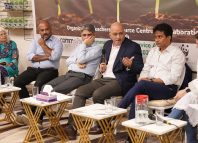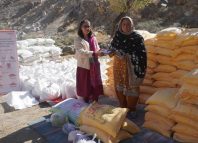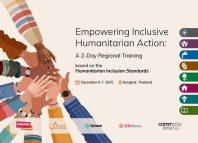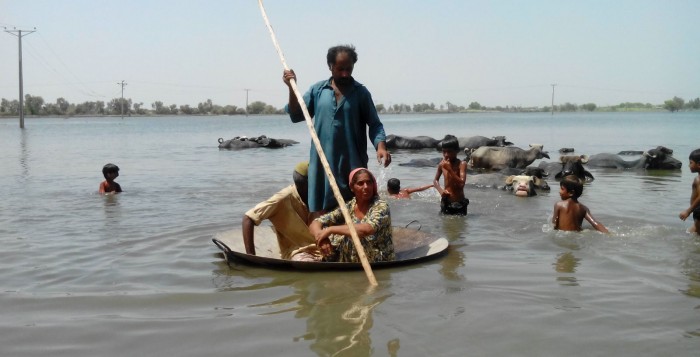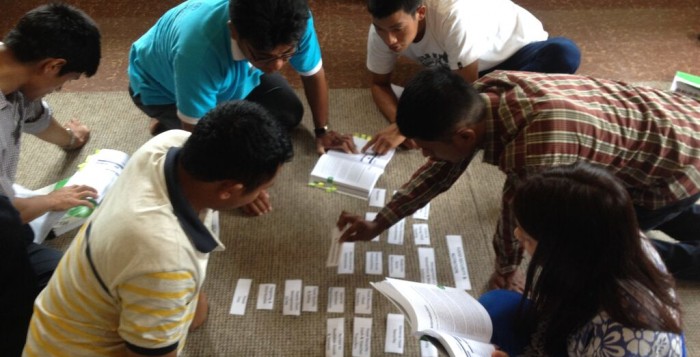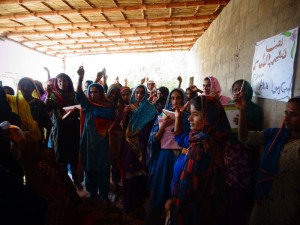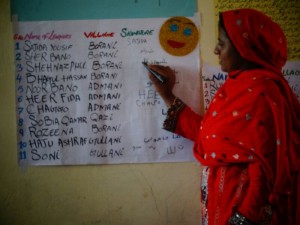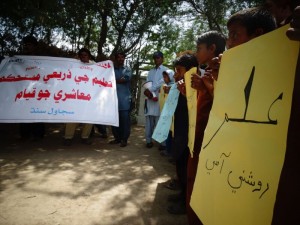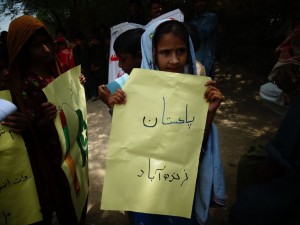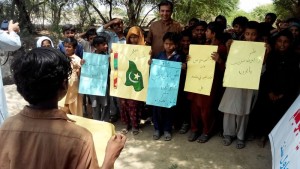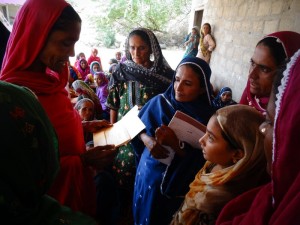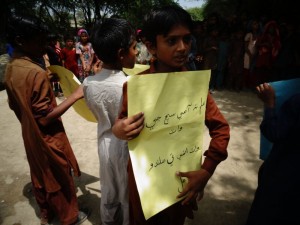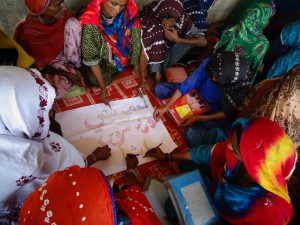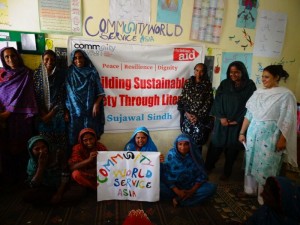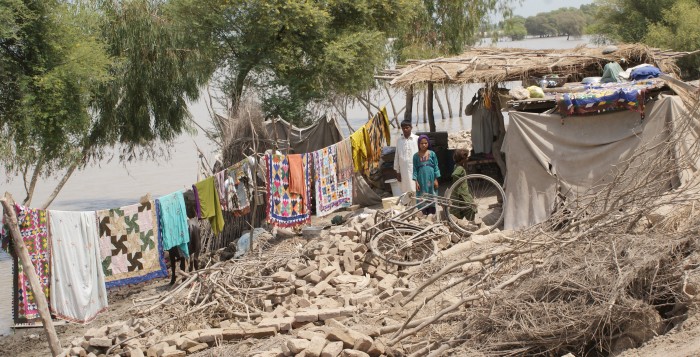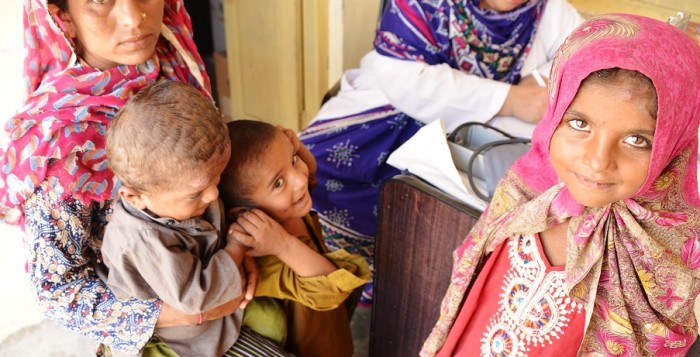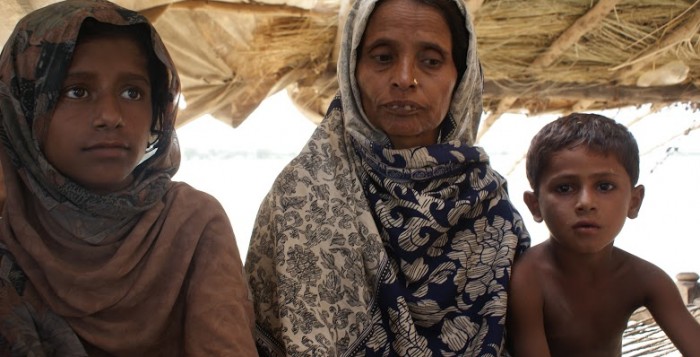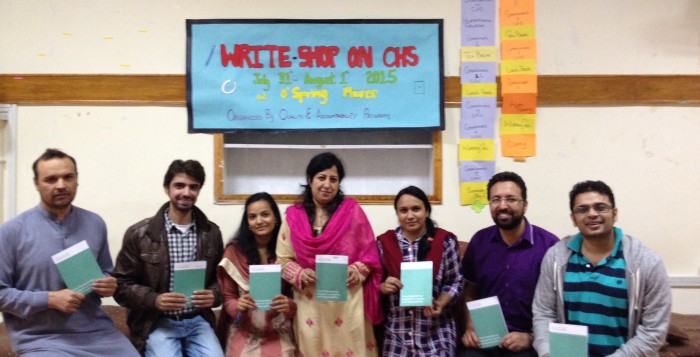Yearly Archives: 2015
Field team photography workshop
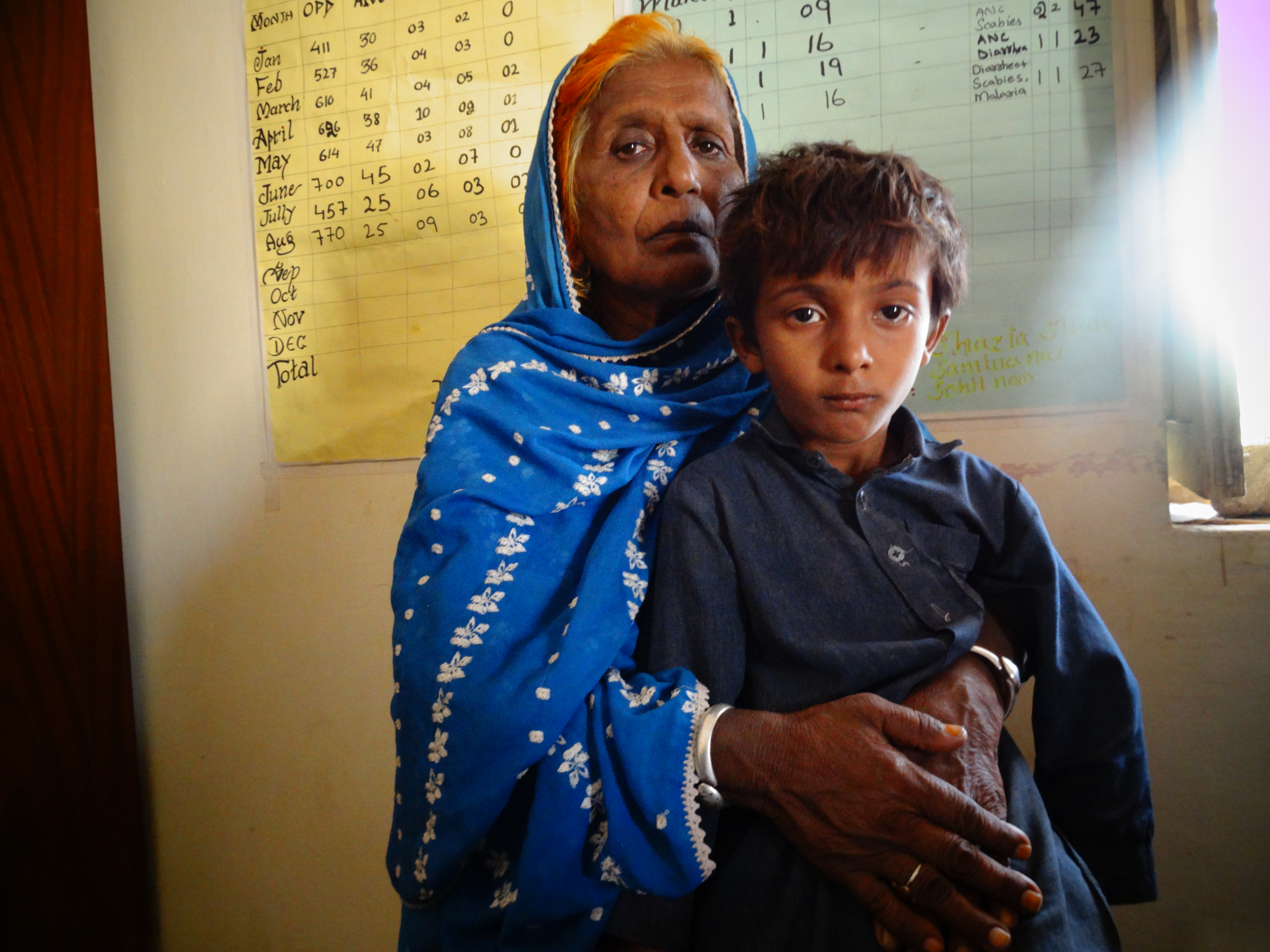
Fareed, seven years old, was brought to the center for the first time by his grandmother for a chest infection. His Grandmother said, “I bring him here because I trust the services of MNCH centre.”

Zameer, five years old, was also visiting the center for the first time due to a chest infection. The team examined and treated him, and advised him to come for a follow-up visit in three days.
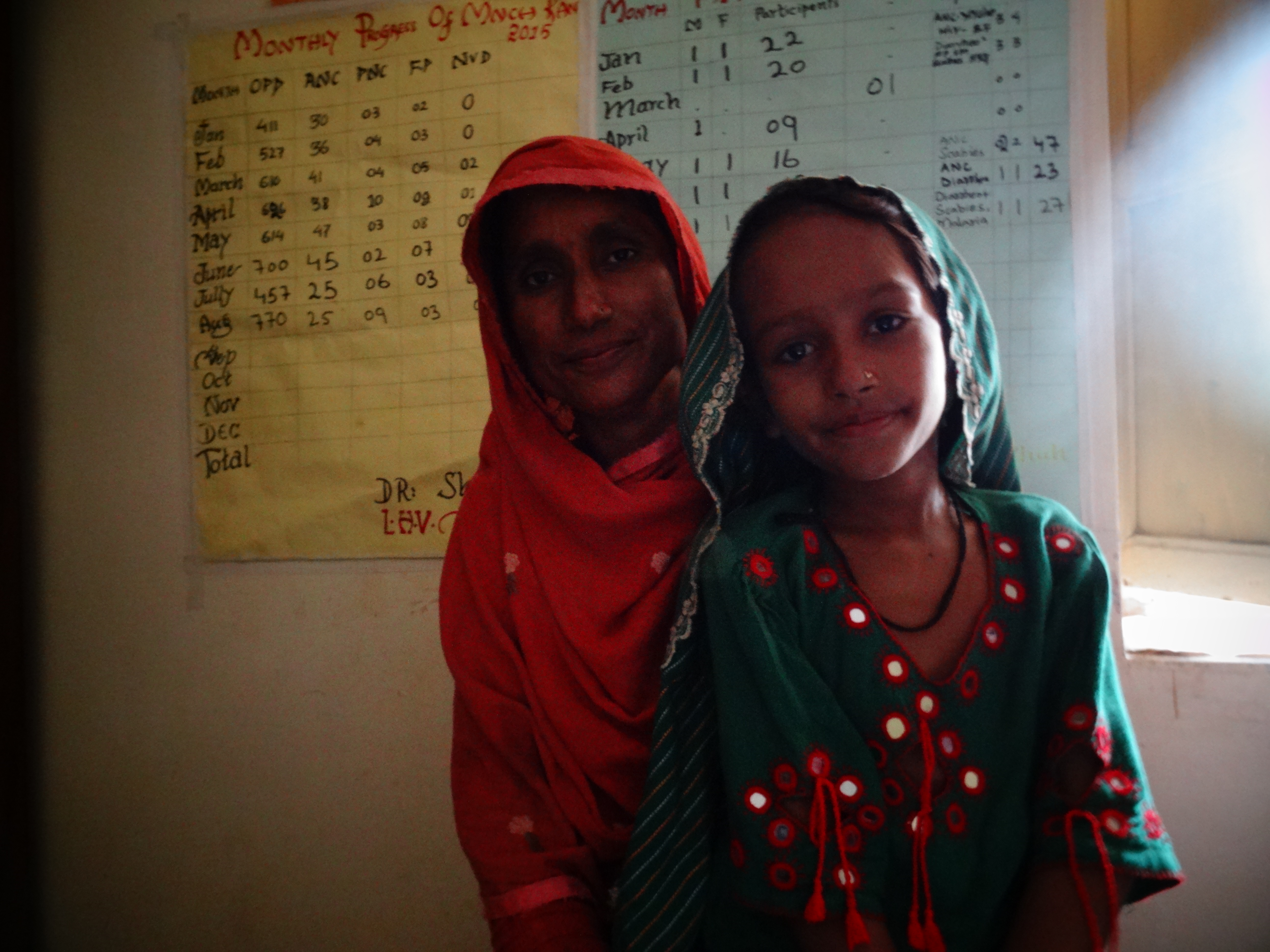
Kasbano, nine years old, came to the center after suffering from suspected malaria for four days. The team confirmed the diagnosis and provided her with medication. Malaria is a widespread problem in Thatta, exacerbated by recent flooding.
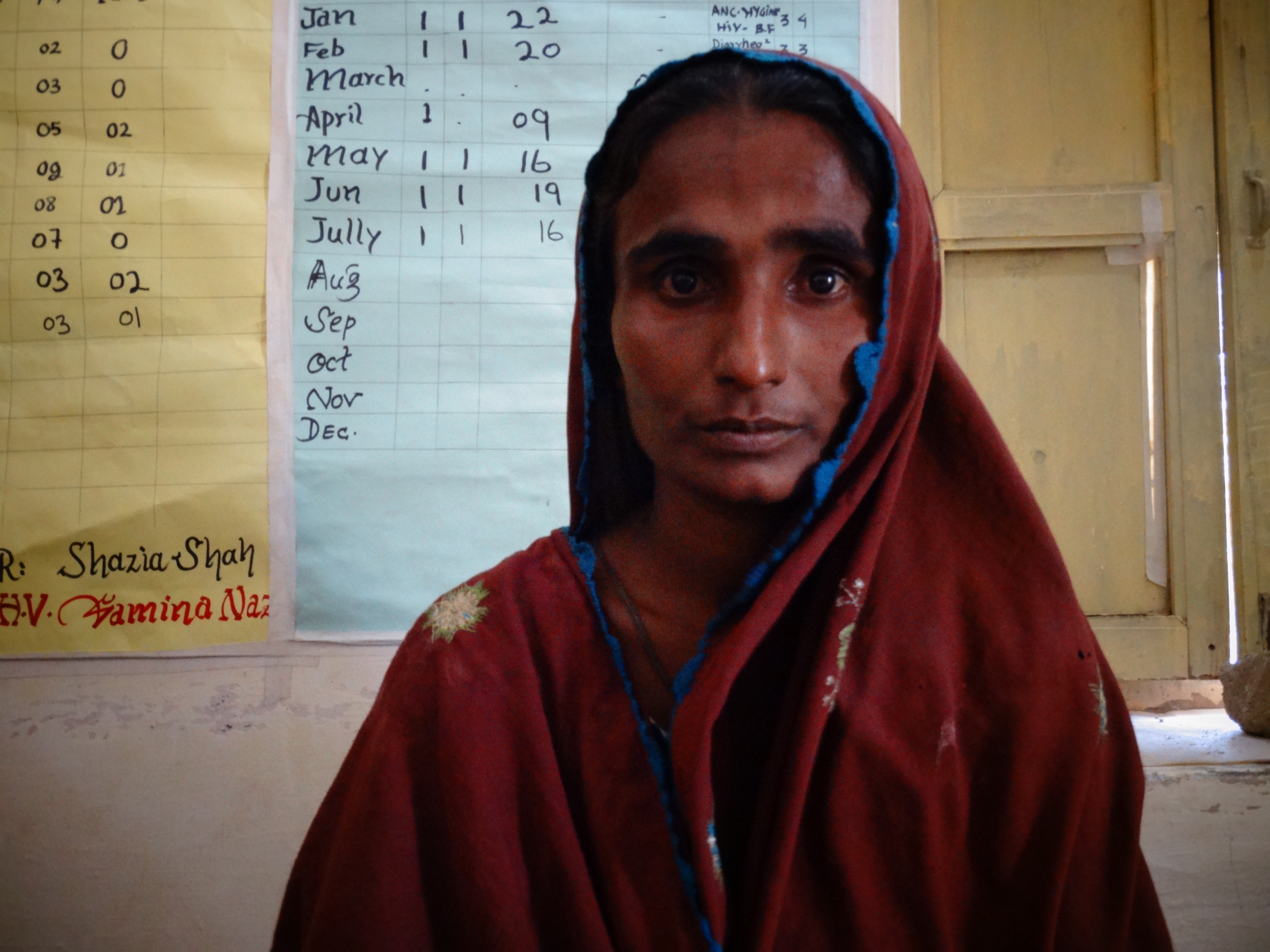
Zulakhan, 40, came to the center for antenatal care. As well as providing pre- and post-natal services, the team promotes awareness of the importance of continued check-ups for the health of new mothers among the community, and the number of women who come to the center for these check-ups has increased significanty.
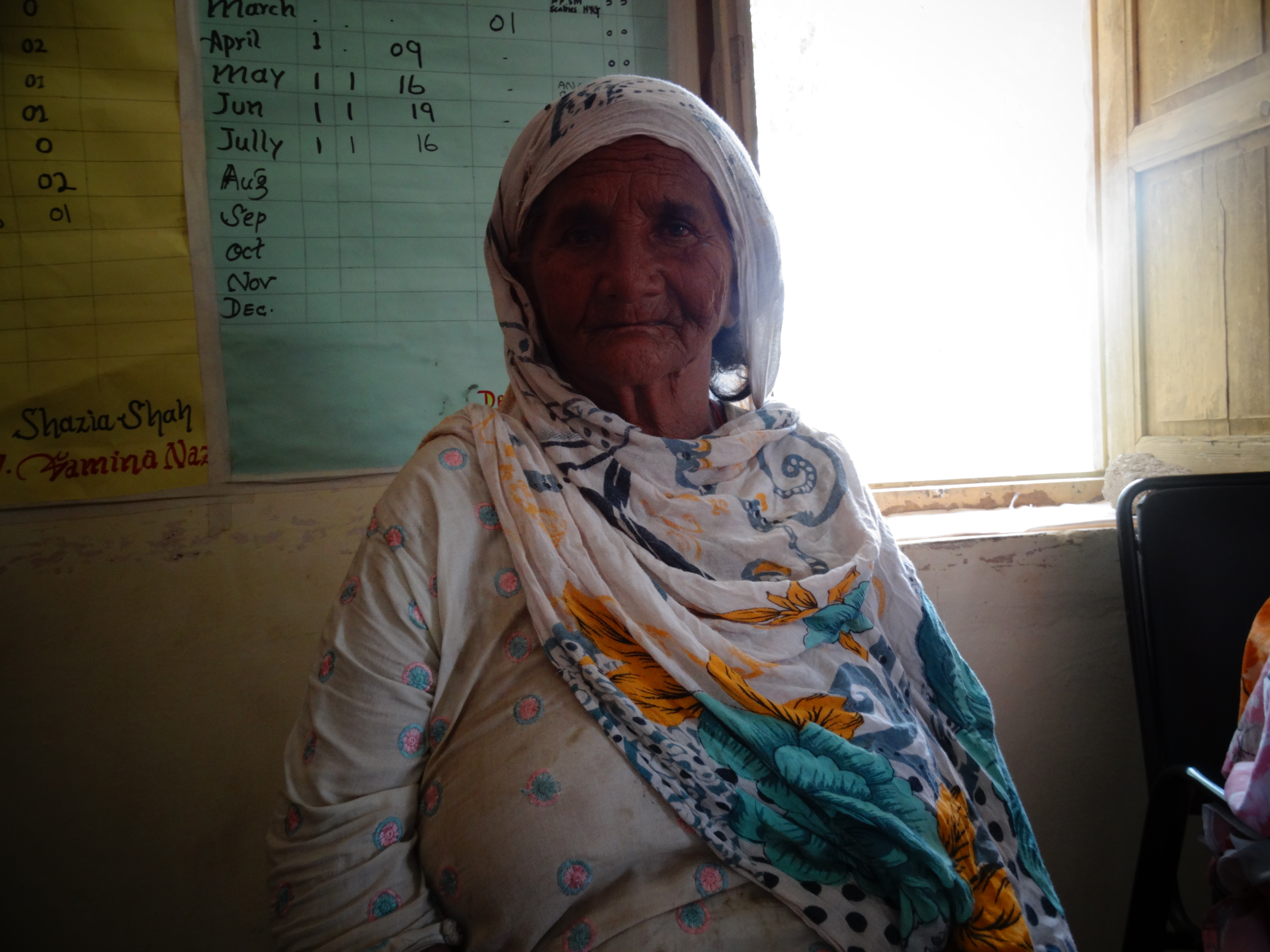
Hakeema, 75, came to the center for a muscular-skeletal issue. The MNCH means that women have access to health care services locally. For elderly women in particular, the ability to reach a doctor when they need one without the time, expense and risk of travelling outside the village to the district hospital is integral to quality of life.

The field team in Thatta recently participated in a photography workshop, and has shared these portraits of patients at the Maternal, Neonatal and Child Health Center, funded by Church of Scotland, using their new skills.
The Floating Family of Gotkhi
“Floods make the poor, the poorest” – Mai Pathani (Gotkhi, Sindh)
Mai Pathani is a 50 year old housewife from the village of Nehal Chachar in Union Council (UC) Qadir Pur in Gotkhi, Sindh. Her husband is a barber named Khawand Buksh. The couple has four daughters and three sons together. Mai Pathani has kept two goats to contribute to the household income since her husband’s income alone is insufficient for the family of nine.
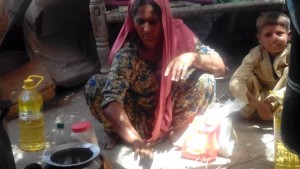 Before the floods hit their village this year, Khawand Buksh provided hair cutting bservices to the village residents and in return each of his clients paid him with wheat grains after each harvest. Some of his clients in the village also offered Buksh’s family food supplies. However, this support was inconsistent.
Before the floods hit their village this year, Khawand Buksh provided hair cutting bservices to the village residents and in return each of his clients paid him with wheat grains after each harvest. Some of his clients in the village also offered Buksh’s family food supplies. However, this support was inconsistent.
Despite living in poverty and on limited resources, Mai Pathani’s zest for life was alive. She celebrated Eid with her neighbors and relatives in the village with enthusiasm not knowing the day to follow would leave her house and her village under water. Mai Pathani and the rest of the villagers were completely unaware of the coming rains when all of a sudden heavy showers started pouring in and within minutes flood water had entered the village.
The residents of Nehal Chachar were informed by authorities that the water level in their village would not rise and they could stay in the village without any worry. There had not been any major flooding in the area since 2010 so the villagers were quite confident about the safety of their village. However, on the night of 18th July, 2015, following Eid day, heavy showers of rain lasted the whole day with water overflowing from Indus River entering the village and submerging it completely. Mai Pathani’s family among many other villagers rushed to leave the flooded Nehal Chachar in the midst of the night. By this time the flood waters had risen up to five feet inside their homes.
Khawand Buksh’s limited income did not allow him to afford renting a boat to carry his family members along with their household essentials out of their plummeting village to the emergency evacuation area at Qadir Pur Band. Inevitably, the family took the risk of sailing out of the village on a large sized frying pan despite the continuing heavy rains and strong winds. Buksh’s family had used the same transport method to float out of their village during the 2010 floods as well. It took them almost an hour to reach the Loop Bund via the frying pan.
Watching an entire family floating in just a frying pan surrounded by nothing but water was quite terrifying for onlookers. However many could not see how Mai Pathani’s family was barely floating economically and socially as well. The family did not own any land or any sustainable assets to ensure their dietary sustenance. To add on, barbers and their families are often socially marginalized in communities in this area; the rigid class system denies such families an equal right to education and participation in social and political spheres.
Mai Pathani’s house and their preserved stock of 480 kgs of wheat had been washed away by the floods. Agricultural and domestic assets of other villagers who often supported their family were also destroyed. Temporarily living at a shelter in Qadirpur Bund, Khawand Buksh sometimes travels to the nearby town to find some clients for his barber service. If fortunate to find clients, he earns PKR 50 a day. Earning this amount and sharing the meal bought by it with other affected families means that his own family hardly consumes a nutritional meal. The family is desperately struggling to make ends meet.
Previously when the floods had not yet hit this peaceful village, Mai Pathani’s family at least took two meals in a day; both the meals consisted of either pulses or vegetables but were sufficient for their family. Since the advent of the floods however, the family’s meals reduced to one a day as pulses and vegetables were scarcely available. Being a woman and coming from a socially marginalized background, the floods and the ensuing displacement has exposed Mai Pathani to not just apparent risks as food insecurity but also to many protection issues.
Being in a displaced setting, Mai Pathani and her two adolescent daughters have to wait the whole day to use the temporary constructed latrines. They have to wait till its dark and there are no men around the latrine area. Pathani and Buksh’s youngest son used to attend school but since the village was hit by the floods, his education has been put on hold too. As a responsible mother and a devoted wife, Mai Pathani’s hardship and sacrifices do not end here. She first feeds her seven children and her husband and eats only if there is any food left over after they have consumed their meal.
Mai Pathani’s family was among the affected communities supported by Community World Service Asia’s Emergency Humanitarian assistance project for Floods Response in Gotkhi last month. She expressed that the food assistance by the organization has made a positive (suthu) impact on their lives. Before the emergency assistance was provided to them, the family only got to eat rice twice a week if lucky. Whereas since the support from Community World Service Asia, they are eating rice more often in a week. The quantity and quality of their daily meals has since then improved as well. Now they have more supply of pulses and wheat bread which makes up a more nutritional meal for the family.
The Buksh family, more popularly known as “the floating family” now hope to return to their village and their home within the next two weeks. They are hoping the flood water levels will recede by then. The committed Mai Pathani plans to help her husband in reconstructing their house once they return to their village. They are optimistic that they will reconstruct the house after a month once the land is fully dry. Though, belonging to a socially marginalized family, Mai Pathani and her husband do not have very high hopes for a drastic change in their life after returning home.
While other villagers will start sowing seeds in their crop fields, the floating family will wait for the harvest of the other farmers to share a small portion of their crop produce with them in return of Khawand Buksh’s barber services. Till then, Mai Pathani worries about the availability of sufficient food for her children. The worried mother envisages that if her children, including daughters, were equipped with some skills they would not have to depend entirely on the crop yields of others. Instead the family would earn and provide for themselves living in their own village.
Written By: Muhammad Fazil, Edited By: Palwashay Arbab
Providing Q&A technical support in Nepal!
To read and download the update, click here: Update_on_QA_Support_Nepal_Sept2015
Celebrating International Literacy Day in Thatta, Sindh.
Community World Service Asia celebrated International Literacy Day with the community in Thatta. Supported by Christian Aid, we have opened two adult literacy centers in which 100 women are enrolled, and are learning to read on write using phonetic methodologies. Raj bai, an adult literacy student, shared that she will become an “educational partner” of her children following the completion of the course, while Fayyaz, a fourth grade student, shared, “I will struggle for the enrolment of other children in my school as well, and I will make it true that my village becomes 100% literate.” We hope to continue working with the community in Thatta to make Fayyaz’s dream a reality!
Photographs were taken by our Thatta team as an assignment of the in-house photography training follow up.
Joint Situation Update II- ACT Appeal – PAK151
Assistance to flood affected communities in Sindh and Punjab
“Rains continues as the number of affected people crossed 1.5 million figure Across Pakistan”
8th September 2015
Background
The flood emergency in Pakistan has affected the lives, livelihood and health of hundreds of communities across the country. The rains that started in the third week of July this year continued with short intervals. The heavy showers of rain coupled with glacial melts that led to lake outbursts created havoc among the communities living along the river beds in Khyber Pukhtunkhwa (KPK), Punjab and Sindh Provinces. According to the National Disaster Management Authority (NDMA) latest update, the number of affected people has crossed the 1.5 million figures and still counting. Sindh remained the worse affected of all the provinces as the number of affected people in Sindh province alone is reported to be under a million. So far 1,529,189 people have been affected leading to 220 deaths and 189 injuries.
The prevailing high temperatures in northern areas combined with rainfall may trigger flash floods in Gilgit-Baltistan and Chitral which is further expected to result in heavy inflows into the local rivers and streams of northern areas. Owing to the current meteorological conditions, the Sindh province being on the tail end of the country is most vulnerable to further damage as all the water from the glacier melts, rains and floods is expected to flow south.
Impact of the Floods:
Sindh: Seven districts and around 3,157 villages have been affected by the floods in Sindh so far. The affected districts in Sindh include Kashmore, Gothki, Shikarpur, Khairpur, Sukur, Qambar Shahdadkot and Sujawal (Thatta). In Sindh alone 958,694 people have been affected and the number is still increasing as the low lying areas are now receiving flood waters flowing in from the upper parts of the country. Due to the geographical situation of the Sujawal (Thatta) district, the area is expected to receive more flood water and more villages of the district are expected to be affected in the coming days.
Punjab: At least 58 people have died and 11 are reported to be injured due to heavy rains and flood emergency in the Punjab Province. A total of 586 villages in Mianwali, Layyah, DG Khan, Rajanpur, Rahimyarkhan and Muzaffargarh districts are inundated by the floods. In total, 463,902 people have been reported to be affected in the province. Rajanpur is declared as the most affected district in Punjab where the local government declared emergency for urgent relief. A total of 256,000 people have been affected by floods in three Tehsils of district Rajanpur where there is a huge need of clean drinking water and sanitation along with hygiene promotion.
Khyber Pakhtunkhwa (KPK): Fourteen districts have been affected by the floods in KPK whereas 102 people have reportedly died and 108 injured. A reported 3,977 houses have been damaged of which 684 have been completely destroyed. The affected districts in KPK include Abbotabad, Bannu, Batagram, Charsadda, Chitral, DI Khan, Hangu, Karak, Kohat, Lakki Marwat, Mansehra, Peshawar, Swat and Shangla.
Gilgit-Baltistan:
Diamer, Gilgit, Ghizar, Ghanche, Skardu and Hunza districts in this region have been reported to be severely damaged. A total of 286 villages and 812 houses are reported damaged as a result of rains, landslides and flashfloods. This has left seven people dead and an overall 35,717 people affected. A number of roads and connecting bridges have also been washed away that have left many villages disconnected from the urban centres.
Azad Jammu and Kashmir (AJK):
Districts Sudhnoti, Neelam, Havaili and Bhimber of AJK have been reported to be severely affected by the recent rains and flash floods which have resulted in the death of 26 people, damaged 17 villages and 408 houses completely.
Baluchistan: Heavy rainfall, windstorm and the resulting floods in districts Zhob, Musakhel, Killa Saifullah, Kohlu and Dera Bugti of Baluchistan has damaged flood protection bunds, electric poles, roads and has uprooted many trees and plantations. The floods have also caused ruptures at various points in the protection bunds and has claimed four lives so far. A total of 16 people have died so far while 34 others have been reported injured. On the whole, 69,976 people are affected in this province and 1,176 houses damaged.
FATA: A reported 11 people have died and 13 have been injured in Khyber and Mohamand agencies of Federally Administered Tribal Areas due to the floods. A total of 424 houses and 19 villages have been damaged across the FATA region which has resulted in affecting around 900 people.
Pakistan ACT Forum Response:
Community World Service Asia has started responding in two districts of Ghotki and Sujawal to the recent flood crisis in Sindh Province. Under its planned assistance, 3,223 flood affected families have been assisted with one month food rations. As per the findings of the assessment of Community World Service Asia team, a number of districts in Sindh are already affected and thousands of more are displaced who are in dire need of food, non-food items (NFIs) and health assistance. The Community World Service Asia team is also assessing the additional emergency and early recovery needs of the communities.
NCA has started emergency response through its partner Sungi in Rajanpur (Punjab) to reach a total of 15,000 flood affected individuals by utilizing their own of 600,000 NOK, The interventions will be carried out in UC jahanpur, UC Hajipur and UC noorpur in Rajanpur district. NCA has installed two water treatment units and have started to deliver water to 10,000 individuals. The Third water treatment unit will be installed and operational by end of this week and water will be transported though water trucks which is expected to fulfill the water needs of an additional 5000 individuals. NCA has its own WASH stock that includes 4000 jerry cans, 93000 aqua tabs and 857 emergency hygiene kits that will be distributed in community.
NCA Pakistan also plans to reach 4,500 individuals through WASH by utilizing ACT appeal grant of 60,000 USD starting from 15th of September 2015 and will end on 15th of February 2016. Through ACT appeal NCA will be reaching to same individuals in areas of their origin. The interventions will include construction of 100 improved sanitation facilities, installation and rehabilitation of 45 hand pumps, distribution of 100 hygiene kits and hygiene promotion.
For more information on the appeal, please refer to the following links:
ACT Appeal Pak 151
Funding Status
| Contacts: | |
| Allan A. Calma
Deputy Director – Disaster Management Program Community World Service Asia Cell: +92 301 5801621 |
James John
Deputy Country Representative Norwegian Church Aid (NCA) Email: james.john@nca.no Cell: +92 345 8551289 |
Community World Service Asia Introductory Video
Inspiring the women of Village Ranta
Dr. Shazia Shah, 30 years old, from Jamshoro, Sindh, is a humanitarian worker and a practising gynaecologist. She works for Community World Service Asia as the only lady doctor serving the community of Union Council Bijora, District Thatta, in the Sindh province. She tells us about the experiences, the challenges and what drives her in her work.
“My mother, Ghulam Zahra, is my biggest inspiration. She always encouraged me to do better. It was her dream to make me a doctor.”
While talking about her work in the humanitarian sector, she shares:
“My work is rewarding for me, I count myself very lucky to be able to make a living doing what is in alignment with my values and the things that I believe in. The contentment I draw from working in this field motivates me to make it my life’s mission to improve the lives of women and children.”
When asked to share an inspiring story which she will never forget, she took a pause and recalled a former patient with a beaming smile:
“I will never forget the smile on Noor Jehan’s face after she saw her new-born baby for the first time. When she came to me, her medical situation was complicated and she had no money or other means to get medical care. She was scared and in a lot of pain, I assured her that despite the complication, I would try my best and she wouldn’t have to sell her livestock to pay the medical bills. She gave birth to a healthy baby here in the Maternal, Neonatal and Child Health (MNCH) center.”
Dr. Shazia added that empathy and compassion are the keystones for humanitarian work; it is the ability to feel what the other person is feeling. This ability connects you with people you work for; it makes you realize that how similar we all are despite coming from different areas, background and cultures.
“The people I have met in this line of work are among the most wonderful friends and colleagues I can imagine. The bonds that are formed working together in intense situations are very powerful, so they stay with you for life.”
As the only female doctor in Ranta village, Dr. Shazia provides access to health care for women and children in need. Her services touch and affect many lives; and a huge amount of energy goes into making sure the necessary support is delivered.
Working as a humanitarian aid worker exposes you to a side of human nature and reality that we are shielded from in our privileged modern day lives. While talking about the challenges and risks she faces during her work, Dr. Shazia is candid. “It gets messy, chaotic, and difficult at times—but I am hooked.” She added that, on a personal level, this experience has transformed her from a naive newcomer to a hardened, hopeful but critical realist. She expressed, “We all know that humanitarian work, especially in crisis situations or in unprivileged areas, is not easy work, but we still go for it because we believe in the worth of the work.”
Dr. Shazia is a beacon of hope and a role model for many mothers and young girls in Ranta village. Not only does she provide them with medical support, but is constantly changing the traditionalist mindset of the villagers too. They are now more open to the idea of sending their daughters to study in schools.
She believes that the world needs more empowered women, and that we should motivate and mobilize women by enabling them to live their life and their dreams to the fullest potential.
“Humanitarian work can be conducted anywhere in the world. What you do today can change a person’s life, so always try to celebrate humanity in your own capacity.”
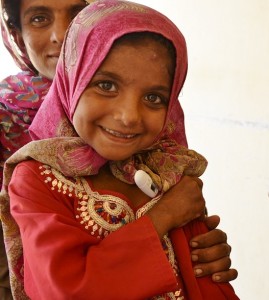
On the World Humanitarian Day, Shazia articulates, “I want to see women unified and empowered by sharing the belief that they hold the power to create and shape. They are a powerful agent of change so we all should do more to support women and promote their role in the humanitarian action”
A mother’s struggle to survive the Floods
Shaink Bund is the central bund (levee) that protects the Qadir pur union council from the threatening flood waters. Qadirpur Union council is a part of district Ghotki in the Sindh province. As the water levels rise, the water from the Shaink bund flows to the other two bunds, Loop bund and Qadirpur bund. There are around thirty five villages located in between Shaink bund and the two bunds. When water in the Shaink bund overflows to the other two bunds, the villages located in between are heavily flooded. The residents of these villages struggle to survive by seeking immediate refuge at the Loop and Qadirpur bunds.
Mae Husna is a 45 years old mother of six living with her ill husband in village Nihal Goth, situated in the middle of the bunds. Her family is among those who have been displaced to the Loop bund for safety. Nihal Goth, situated at a 500 meters distance from Loop bund is only a kilometer away from the river bank which is why it is among the most affected villages as the bund overflows. Most of the houses in the village have sank to almost 90 percent under the flood water. These houses have become unfit to live in even after the water levels go down.
Remember the horrifying day of when the flood came, Mae Husna mournfully narrated the experience,
“The water levels had started increasing on the night before Eid. The water had started flowing into our house heavily so we had to leave our house soon after offering Eid prayers early morning. Our only aim was to save our lives and leave everything else and our home as it was. We were given no early warnings about the floods.”
Her husband being unable to work due to his illness, Mae Husna is the sole bread winner for the family. Of her five daughters, three have been married off so they live on their own with their husbands while the younger two daughters have been sent to a relative’s house to be in a safer environment. The mother could forsee the protection issues her teenage daughters would have had to face in such uncertain living conditions at the embankment. Having no biological son of her own, Mae Husna adopted her only son from her relatives who is with her and her husband at the Loop bund these days.
The flood affected communities in Qadirpur UC are facing grave water, sanitation and health and hygiene issues. They have no food to cook for themselves or utensils to cook with. They are living without shelters. Drinking water is brought from a two kilometers distant village. Diseases such as diarrhea among children, malaria, high fever and skin infections have been reported at a rise.
Community World Service Asia along with its local partner in Sindh, Transformation and Reflection for Rural Development (TRD) have identified and selected hundred most vulnerable flood affected families taking refuge at Loop bund in district Ghotki. These selected families have been distributed one month food rations. The food package has been designed for a household of six members, which is the average household size in the province. The items in the food package include 65Kgs of wheat flour, 15kgs of rice, 8 kgs of pulses, 4 kgs of sugar, 6 liters of oil, 800 grams of iodized salt, 400 grams of black tea leaves and a match box.
Based on the selection criteria of the most vulnerable families, Mai Husna and her family has been selected for the emergency food assistance. After receiving the food ration she expressed,
“Life cannot be the same all the time, but it is good that an organization such as Community World Service Asia is here to help troubled people like us in such difficult times.”
Promoting the Core Humanitarian Standards (CHS)
To build an understanding of the brand new Quality and Accountability (Q & A) initiative, the Core Humanitarian Standard (CHS), the Q&A team of Community World Service Asia organized a two day in-house “Write-shop” for its relevant staff members from July 31st to Aug 1st at the O’Spring Estate in Murree, Pakistan. The write-shop was the first of its kind to be conducted in-house. It promoted the importance and explained the structure of CHS and its implementation internally as well as externally. Participants were asked to prepare some of the session plans on the assigned topics for the training which they each presented through various methodologies. At the end of the write-shop, participants developed a concrete action plan that aimed to help them in implementing CHS internally and as well as providing technical services to external stakeholders.

